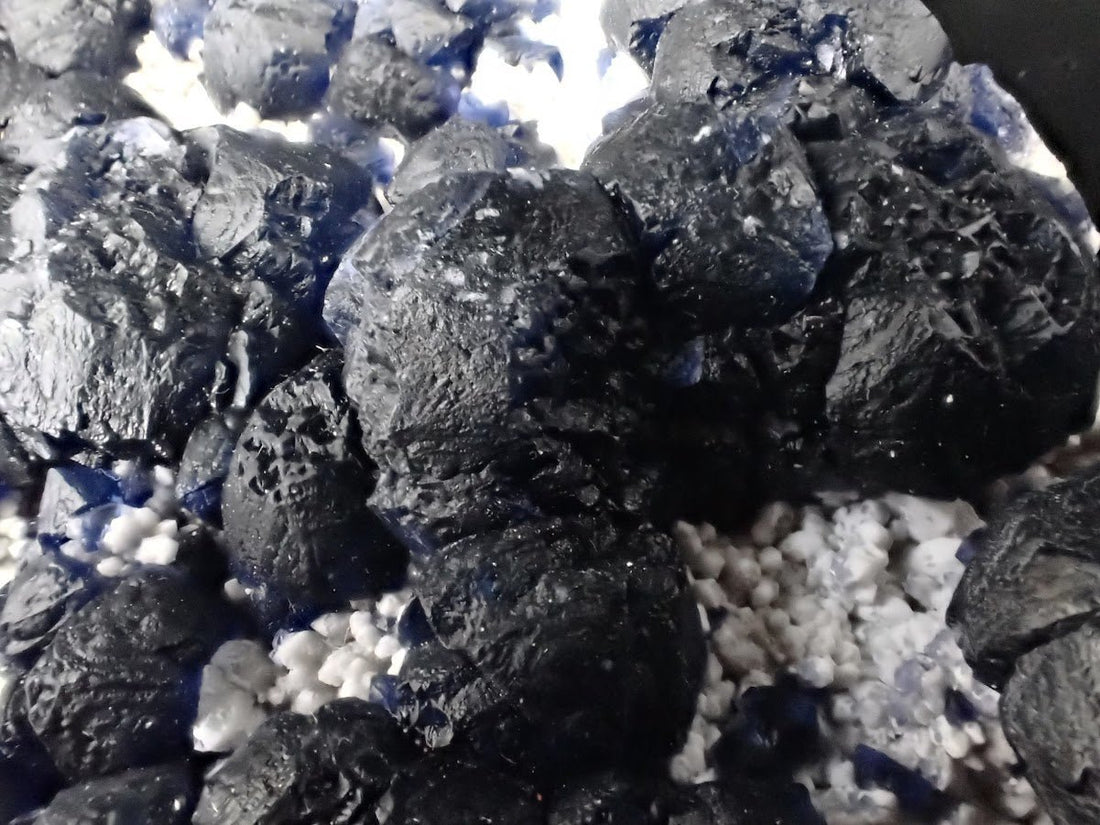
Crystal Growth Explained — From Molecule to Masterpiece
Share
Crystals don’t just appear fully formed. Each one is the result of a slow, structured dance of atoms deep within the Earth. Whether it’s a perfect fluorite cube or a cluster of quartz points, every crystal tells the story of its own formation — from invisible beginnings to museum-worthy beauty.
What Is a Crystal?
A crystal is a solid material where the atoms are arranged in a highly ordered, repeating pattern known as a crystal lattice. This internal structure is what gives crystals their external symmetry and defined shapes — like cubes, points, or hexagons.
Not all solids are crystals — only those with this repeating atomic order. That’s why glass (which is amorphous) doesn’t form in natural shapes, but quartz does.
How Crystals Form in Nature
Natural crystals grow when the right conditions come together: space, heat, pressure, time, and the right mix of chemical ingredients.
- 🌡️ Temperature: Too hot or too cold, and the crystal can’t grow
- 💧 Fluids: Mineral-rich water or molten rock must carry the elements to form the crystal
- 🧱 Space: Crystals need room to grow without crowding — that’s how they get clean terminations
- ⏳ Time: Large, well-formed crystals often take thousands to millions of years to grow
The 3 Main Types of Natural Crystal Formation
1. Igneous Crystals
These form as magma or lava cools. As the liquid rock cools slowly, atoms begin to bond and crystallize. Quartz, feldspar, and zircon are common igneous crystals.
2. Metamorphic Crystals
Heat and pressure deep within the Earth can change one mineral into another — often growing new crystals in the process. Think of garnet or staurolite forming within schist.
3. Sedimentary & Hydrothermal Crystals
When mineral-rich water moves through rock fractures or caverns, it can leave behind dissolved minerals — creating fluorite, calcite, barite, or quartz in vugs, veins, or geodes.
Why Crystals Have Different Shapes
The shape a crystal takes — whether it’s a cube, point, blade, or ball — depends on its internal atomic structure and how it grows.
- 🟪 Fluorite: Forms cubes due to its isometric crystal system
- 🔻 Quartz: Forms hexagonal prisms with pointed terminations
- 💎 Calcite: Can form dogtooth, rhombohedral, or scalenohedral shapes
When crystals grow freely in a cavity (like a vug), they tend to show their full shape. When crowded, they may be distorted or form in clusters.

What Affects Crystal Quality?
The final appearance of a crystal depends on both the environment and the chemistry during its growth. Key factors include:
- 📏 Growth space: Cramped growth = incomplete or fused crystals
- 🌡️ Temperature changes: Rapid cooling can cause zoning, phantoms, or split formations
- 🧪 Elemental shifts: The presence of other elements (like iron or uranium) can cause color changes, inclusions, or fluorescence
Legacy’s Love for Crystal Structure
At Legacy Crystals and Minerals, we don’t just select crystals for color or sparkle — we look for integrity of structure, sharp terminations, and signs of slow, natural growth. Whether it's a fluorite cube with rainbow zoning or a quartz scepter from a now-closed pocket, we honor the long journey from molecule to masterpiece.
Final Thoughts: Nature’s Geometry
Crystals are Earth’s slow art — formed over ages, built by order and shaped by chaos. Whether you collect for science, energy, or beauty, understanding how crystals form deepens the magic in every piece.
From molecule to masterpiece, every crystal is a story told in structure.



